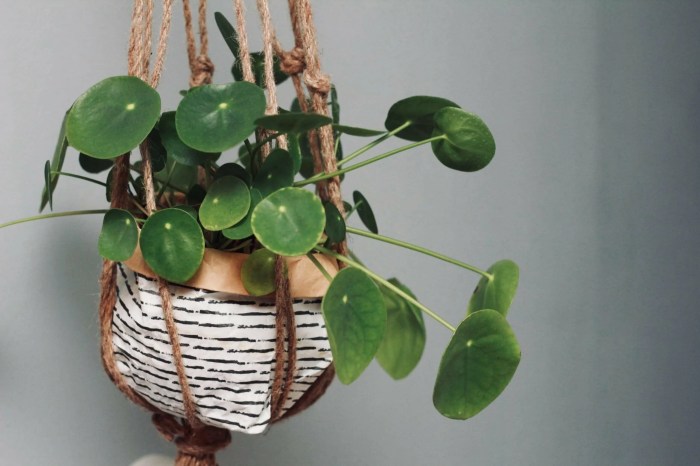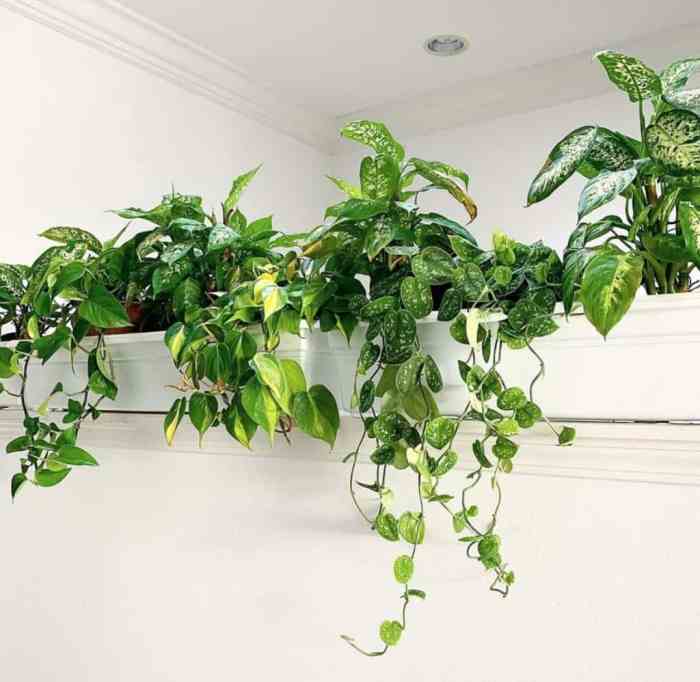Good indoor hanging plants are a versatile and stylish way to add life and beauty to your home. Whether you’re looking to purify the air, create a cozy atmosphere, or simply add a touch of greenery, there’s a hanging plant perfect for your needs.
In this guide, we’ll explore the best indoor hanging plants, provide tips on choosing the right ones for your space, and offer care and maintenance advice to keep your plants thriving.
Identify the Best Indoor Hanging Plants

Indoor hanging plants not only add a touch of greenery and beauty to your space but also provide various benefits, including air purification, low maintenance, and aesthetic appeal. Here’s a comprehensive guide to the best indoor hanging plants, along with their scientific and common names:
Spider Plant
- Scientific name: Chlorophytum comosum
- Benefits: Air purification, easy propagation, low maintenance
- Description: The spider plant is a popular choice for hanging baskets due to its long, arching leaves and trailing plantlets. It’s known for its ability to remove harmful toxins from the air and is generally low-maintenance.
Pothos
- Scientific name: Epipremnum aureum
- Benefits: Air purification, low light tolerance, easy propagation
- Description: Pothos is a versatile hanging plant with trailing vines and heart-shaped leaves. It’s highly tolerant of low light conditions and is known for its air-purifying properties.
String of Pearls
- Scientific name: Senecio rowleyanus
- Benefits: Unique appearance, low water requirements, trailing growth
- Description: The string of pearls plant features long, trailing stems adorned with spherical, pearl-like leaves. It’s a drought-tolerant plant that adds an interesting and unique touch to hanging baskets.
Choosing the Right Hanging Plants for Your Space

When selecting hanging plants for your home, it’s crucial to consider several factors to ensure they thrive and complement your space. The light conditions in each room play a significant role in determining the type of plants that will flourish.
Bright, indirect light is ideal for most hanging plants, while low-light areas require shade-tolerant varieties.Humidity levels also influence plant selection. Bathrooms and kitchens tend to have higher humidity, making them suitable for plants that prefer moist environments. In contrast, living rooms and bedrooms may be drier, requiring plants that can tolerate lower humidity.The
For those looking to add a touch of greenery to their indoor spaces, good indoor hanging plants are an excellent choice. From the trailing vines of a best hanging houseplants like Pothos to the cascading foliage of a Spider Plant, these plants can add a sense of tranquility and freshness to any room.
Not only are they aesthetically pleasing, but many good indoor hanging plants also offer air-purifying qualities, making them a practical and stylish addition to any home.
size of the plant is another essential factor to consider. Large hanging plants can create a dramatic statement in spacious rooms, while smaller varieties are better suited for compact areas. It’s important to choose plants that are proportionate to the size of the room and the hanging space available.Creating
a balanced and visually appealing arrangement is key. Mix different plant sizes, textures, and colors to add interest and depth. Consider the overall aesthetic of the room and choose plants that complement the existing décor. By carefully selecting hanging plants based on these factors, you can create a thriving and visually stunning indoor oasis.
Light Conditions
- Bright, indirect light is ideal for most hanging plants, including spider plants, pothos, and philodendrons.
- Low-light areas require shade-tolerant varieties such as snake plants, ZZ plants, and peace lilies.
- Assess the light conditions in each room before selecting plants to ensure they receive the appropriate amount of light.
Humidity Levels
- Bathrooms and kitchens tend to have higher humidity, making them suitable for plants that prefer moist environments, such as ferns, maidenhair ferns, and orchids.
- Living rooms and bedrooms may be drier, requiring plants that can tolerate lower humidity, such as succulents, cacti, and aloe vera.
- Consider the humidity levels in different areas of your home when choosing hanging plants.
Plant Size
- Large hanging plants, such as macrame hangers or ceiling planters, can create a dramatic statement in spacious rooms.
- Smaller hanging plants are better suited for compact areas, such as shelves or windowsills.
- Choose plants that are proportionate to the size of the room and the hanging space available.
Creating a Balanced Arrangement, Good indoor hanging plants
- Mix different plant sizes, textures, and colors to add interest and depth to your arrangement.
- Consider the overall aesthetic of the room and choose plants that complement the existing décor.
- Experiment with different hanging heights and positions to create a visually appealing display.
Hanging Plant Care and Maintenance
Nurturing indoor hanging plants requires specific care to ensure their health and aesthetic appeal. Watering frequency, fertilizing schedules, and pruning techniques vary depending on the plant species. Understanding these requirements is essential for maintaining vibrant and thriving hanging plants.
Watering
Most hanging plants prefer moist soil, but overwatering can lead to root rot. Allow the top inch of soil to dry out before watering again. During winter months, reduce watering frequency as plants enter dormancy.
Fertilizing
Fertilize hanging plants monthly during the growing season (spring and summer) with a balanced liquid fertilizer diluted to half strength. Avoid over-fertilizing, as this can damage the plant.
Pruning
Pruning hanging plants promotes healthy growth and removes dead or damaged foliage. Use sharp, clean shears to trim back overgrown stems and encourage bushier growth. Prune regularly to maintain the desired shape and size.
Troubleshooting Common Problems
- Yellowing leaves:This can indicate overwatering, underwatering, or nutrient deficiency. Check soil moisture and adjust watering accordingly. If leaves are also brown and crispy, increase humidity around the plant.
- Pests:Aphids, mealybugs, and spider mites are common pests that can infest hanging plants. Use insecticidal soap or neem oil to control infestations.
Design Ideas for Hanging Plants
Hanging plants offer a touch of greenery and tranquility to any indoor space. By showcasing them in creative ways, you can transform your home into a lush and inviting oasis.
Good indoor hanging plants are a great way to add life and color to your home. If you’re looking for a way to display your plants in a stylish way, consider using indoor plant hangers for windows . These hangers are a great way to show off your plants and add a touch of greenery to your windowsills.
They come in a variety of styles and materials, so you can find one that matches your décor. Plus, they’re easy to install and can be used to hang a variety of plants, from small succulents to large ferns.
One popular way to display hanging plants is to use macrame hangers. These intricate knots and cords add a touch of bohemian flair while securely holding your plants in place. Macrame hangers can be hung from ceilings, walls, or even doorknobs, giving you plenty of flexibility in placement.
Wall-Mounted Planters
Wall-mounted planters are another stylish option for hanging plants. These planters come in various shapes and sizes, allowing you to create a customized vertical garden. Wall-mounted planters can be used to display small succulents, trailing vines, or even larger plants with cascading foliage.
Hanging Baskets
Hanging baskets are a classic choice for hanging plants. They provide ample space for plants to grow and thrive, and they can be easily suspended from ceilings or beams. Hanging baskets are available in various materials, including wicker, metal, and plastic, so you can find one that complements your decor.
Additional Considerations: Good Indoor Hanging Plants
While hanging plants can bring numerous benefits to indoor spaces, it’s essential to consider potential risks and make informed choices. Here are some additional factors to keep in mind:
Risks:Hanging plants can pose a risk if not properly secured. Heavy plants or those with trailing vines can become unstable and fall, causing injury or damage. Ensure plants are securely hung using sturdy hooks or brackets and consider the weight and placement.
Non-Toxic Plants for Pets and Children
If you have pets or young children, choosing non-toxic plants is crucial. Some common houseplants, such as lilies, daffodils, and tulips, can be poisonous if ingested. Opt for pet-friendly plants like spider plants, ferns, and orchids to avoid any potential risks.
Specific Purposes
Hanging plants can serve specific purposes beyond aesthetics. Some plants, like peace lilies and spider plants, are known for their air-purifying qualities, removing toxins from the air. Trailing plants, such as ivy and pothos, can create a sense of privacy by covering windows or dividing spaces.
Final Review

With a little care and attention, good indoor hanging plants can bring years of joy and beauty to your home. So embrace the greenery and enjoy the many benefits that these versatile plants have to offer.
Clarifying Questions
What are the most popular indoor hanging plants?
Some of the most popular indoor hanging plants include pothos, spider plants, philodendrons, and ferns.
How do I choose the right hanging plants for my space?
Consider the light conditions, humidity levels, and size of your space when choosing hanging plants. You’ll also want to choose plants that are easy to care for and non-toxic if you have pets or children.
How do I care for indoor hanging plants?
Water your hanging plants regularly, but be sure to let the soil dry out between waterings. Fertilize your plants monthly during the growing season. Prune your plants as needed to remove dead or damaged leaves.